Chuck Eye Steak: What Is It?
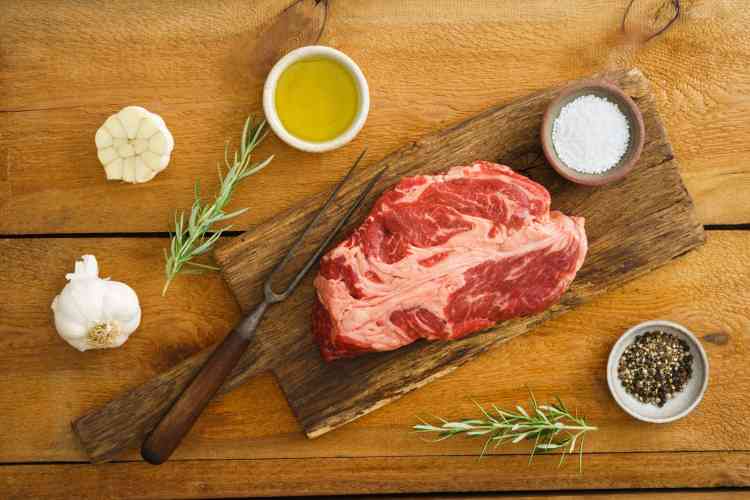
Chuck eye steak may not always be the focus of your attention when you’re perusing the meat section of the grocery store, where superstar cuts like ribeyes and sirloins tend to reign supreme. Still, we’re of the opinion that chuck eye steak’s underdog status is undeserved. It may not be as flashy as other beef cuts, but there’s a lot you can do with this humble, budget-friendly steak to make it the delicious star of a meal.
The proper guidance can show you how to coax the utmost possible flavor and tenderness from a chuck eye. There are cooking classes in Dallas to everywhere from cooking classes in San Francisco, so there’s sure to be a cooking class near you ready to show you the trick to getting your chuck eye steak perfect.
Whether it’s a special occasion or a weekday dinner to fuel your family, chuck eye is a great choice that doesn’t break the bank. Let’s delve a little deeper into this versatile cut of beef and see where its best qualities lie.
Jump to Section
- What Is a Chuck Eye Steak?
- Chuck Eye Steak vs. Chuck Steak vs. Chuck Roast
- Flavor and Texture of Chuck Eye Steak
- How to Cook Chuck Eye Steaks
- Where to Buy Chuck Eye Steaks
What Is a Chuck Eye Steak?
Let’s start with the basics: The chuck eye steak comes from the shoulder portion of the cow, known as the chuck. It actually touches right up against and shares a bit of muscle with the ribeye portion, which is usually a sought-after cut for its high fat content and resultant rich flavor. The ribeye usually comes from between the sixth and 12th ribs, whereas the chuck eye steak comes from ribs five and lower.
It’s known as “the poor man’s ribeye” because it’s a slightly tougher cut of meat that comes with a lower price tag. Nonetheless, it does share some similarities to the regular ribeye. It just requires a bit more work to enhance those qualities, and that extra bit of effort can yield incredible results.
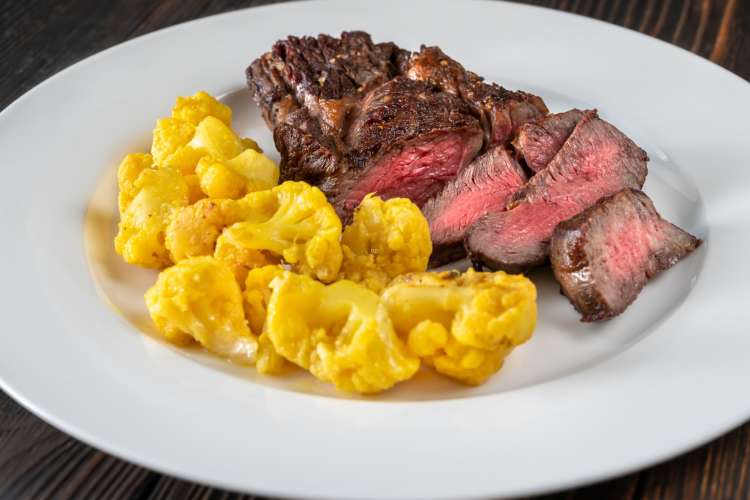
Chuck Eye Steak vs. Chuck Steak vs. Chuck Roast
To choose the best cut of meat for your purposes, it’s important to understand the relationship between chuck eye steak, chuck steak and chuck roast. They’re all sourced from the beef chuck primal, a huge section of the cow encompassing its shoulder and sections of its ribs, upper arm and neck. The chuck primal weighs nearly 100 pounds and takes up about 30% of a whole side of beef. Needless to say, you can get many different cuts from the beef chuck.
The chuck roast is a cylindrical or oblong cut sourced from the central part of the chuck roll. When the butcher slices one to two-inch thick pieces from the chuck roast, you’ve got chuck steaks. There are six main types of chuck steak, and the one sourced from the area next to the ribeye is the chuck eye steak.
Chuck roast is a wonderful choice for stews or roasts since it’s a tougher cut. Low and slow cooking methods like braising, stewing and roasting are the key to making tough cuts like this more tender. Think boeuf bourguignon or a classic roast with carrots, potatoes and onions.
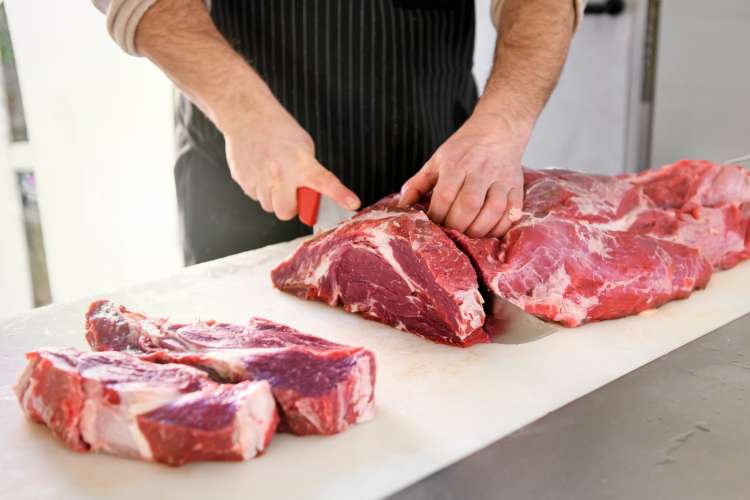
Flavor and Texture of Chuck Eye Steak
Chuck eye steak tends to have a particularly rich and beefy flavor and slightly tougher texture, coming, as it does, from a frequently used portion of the cow’s body. A longer cook time and a liberal coating of salt and pepper before cooking will really help tenderize the meat and bring out the flavor, which some describe as a more muted version of a ribeye.
How to Cook Chuck Eye Steaks
Oven, grill or pan are all good methods for cooking a chuck eye steak, and it can go straight to the heat after being lightly seasoned. A chuck eye steak shouldn’t need a marinade, being flavorful and tender enough from its proximity to the ribs. (But be aware that the same can’t be said for other varieties of chuck steak!) A little salt, pepper and olive oil ought to be all you need to enhance a chuck eye steak’s natural charms.
Cook the steak quickly and with high heat to avoid it becoming overdone and dry, which it will certainly do if allowed to stay on the heat too long. On the grill, four to five minutes per side should get you a nice medium-rare doneness. For medium, cook an extra minute or two longer on each side. Doneness is, of course, a personal taste, but we suggest not cooking beyond medium for this cut of beef.
Chuck eye steaks are also good for cooking up fajita-style in thin strips with a tasty sauce to go along with peppers and onions. They’re also a frequent choice for ground beef. You can make your own ground beef out of chuck eye steak at home with a meat grinder and add things like bacon or other cuts before making meatloaf, meatballs and other creations.
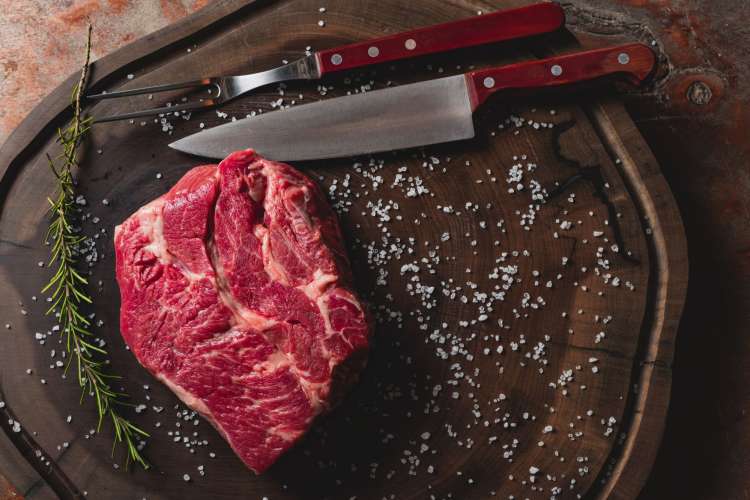
Where to Buy Chuck Eye Steaks
If you’re shopping for a dinner party or preparing for an online cooking class, your local grocery store probably has chuck eye steaks available, though you might need to reserve one in advance. This is because there are only two chuck eye steaks per cow, so they tend to get bought up rather quickly, sometimes by the butchers themselves! A butcher shop would offer it as well, and you can always special order it online.
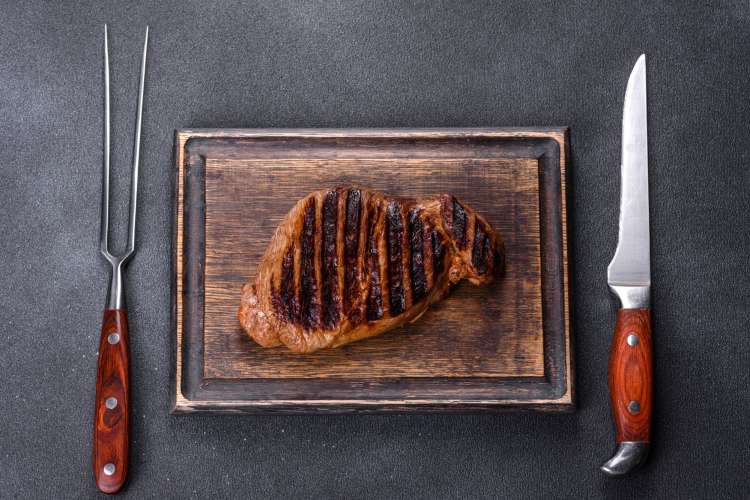
Chuck eye steaks are very well-rounded pieces of meat in terms of all the qualities they possess. A very affordable cut of meat, it may never compete with a filet mignon or a prime ribeye, but it can still deliver on a lot of flavor. It can be grilled, pan-seared or ground up for a variety of texture and flavor outcomes that you can customize to your tastes. A delicious steak meal doesn’t have to break the bank or be a lot of work, and that’s where the chuck eye steak really shines.
For even more fun ways to explore food, check out other experiences happening on Cozymeal.



FOOD FOR THOUGHT?
Join the conversation.